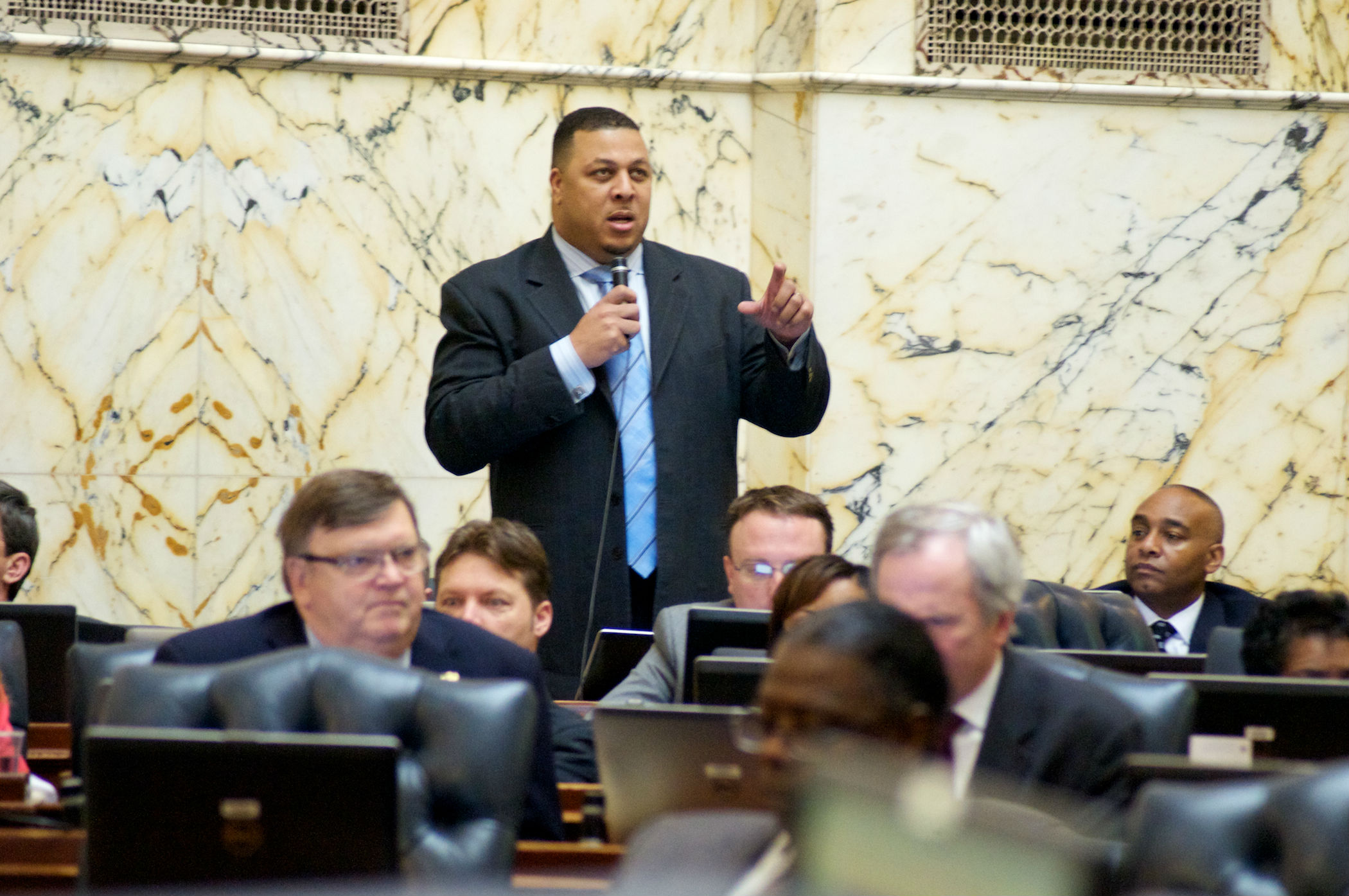 By Len Lazarick
By Len Lazarick
Len@MarylandReporter.com
The General Assembly’s Joint Pensions Committee unanimously recommended Wednesday abandoning a pension funding method that has allowed the state to pay hundreds of millions less each year into the state retirement system than actuaries said was needed.
The so-called “corridor method” was instituted 10 years ago when the system was almost fully funded. But over time, due to lower contributions and several years of poor investment returns, the $37 billion fund only covers 65% of the future liabilities for the 376,000 active and former state employees and teachers it covers.
There was virtually no discussion of this major change, which was aired more extensively at a Nov. 14 hearing. The change must be approved by the House and Senate budget committees on which all 16 members of the Joint Pensions Committee sit.
The corridor method will be phased out over 10 years. A key motive for the switch is that the corridor method, which saved the state money over its first 10 years, was going to begin requiring much larger contributions in the near future.
In the fiscal 2014 budget Gov. Martin O’Malley will submit in January, the state would have had to sock away $1.8 billion for retirement and more than 20% of payroll from 2016 onward. The switch from the corridor method will save the state $451 million over the next five years.
Pay me now or pay me later
Dean Kenderdine, executive director of the Maryland Retirement Agency, described the corridor method as “pay me now or pay me later” and those later payments were coming due.
The failure to fund the annual contribution recommended by actuaries has also been criticized by bond-rating agencies.
The change in funding method also expects that the board of the retirement system will reduce the assumed rate of investment return from 7.75% to 7.55% over the next four years.
That rate of return is considered unrealistic by some outside analysts, including Fitch Ratings. The state’s pension investments earned only 0.36% in fiscal 2012.
Related stories: Md. pension system earns close to nothing in past year





Having looked at the Maryland and City of Baltimore pension investment records from 2007-2008 the first thing I noticed was both of these public sector pensions were moved from the safety of bond investments to a high-risk stock market purchase……right before the economic collapse. Wall Street asked that all pensions be used to buoy the falling stock market and sure enough, there went the pension funds. We all know that doing so was malfeasance and as such, we need to replenish those pension funds with the financial fraud settlements yet to be collected. So, as financial analysts said over these last few years……a compromise settlement for trillions in fraud would be $600-800 billion. Maryland’s AG Gansler has brought back $25 billion and change of that. So public pensioners need to shout loudly for the state to ‘show them the money’. The fact that our justice system is silent on that large of fraud is incredulous.
We also need to recognize that as O’Malley defunded the Baltimore pensions in the 1990s while there, he did the same for the state pensions while governor. Now, remember, Clinton had a strong economy through much of the 1990s and Bush created an economic engine based souly of massive fraud…but the revenue coming in should have created a surplus for these pensions. O’Malley instead was sending all that money out as business tax credits and development projects that could have easily been funded by profit-flush investors. We need to look at the laws surrounding his ability to blow aside these pension funding given the availability of revenue.
Wall Street has sent the word to all the corporate pols that the next scheme/bubble will be credit bonds and in fact, Maryland is handing Wall Street tons of business as all public assets become attached to this credit at a time when the economy is set to crash as in 2008. Note that Baltimore County attached its pensions to these bonds and I bet that will be what Maryland does with state pensions. That means when the crash happens….and it will…..all of these public assets/liabilities will be at risk.
So Maryland hopes to change its pension-accounting method for the third time in 11 years. Accounting Principles Board No. 20 (Accounting Changes) provides that once one accounting method is chosen, there is a presumption it will be permanent, so that financial statements can remain comparable over time. The presumption that the State cannot change an accounting method may be overcome only where the State justifies the use of an alternative that’s acceptable under GAAP. That’s what the standards require…..
The State’s financial auditors have a duty to evaluate whether the State can continually change its accounting methods; justifying them on self-serving grounds that amount to budgeting and cash-flow-driven manipulations.
If the State were in the private sector, the Internal Revenue Service and Department of Justice would be hot n heavy on ’em.
From the article : ”
The change in funding method also expects that the board of the
retirement system will reduce the assumed rate of investment return from
7.75% to 7.55% over the next four years.
That rate of return is considered unrealistic by some outside
analysts, including Fitch Ratings. The state’s pension investments
earned only 0.36% in fiscal 2012. ”
Where did the 7.75 % return figures come from ? Or 7.55 % for that matter ?
I’d LOVE to see what the pension board used to “gin up” these figures…